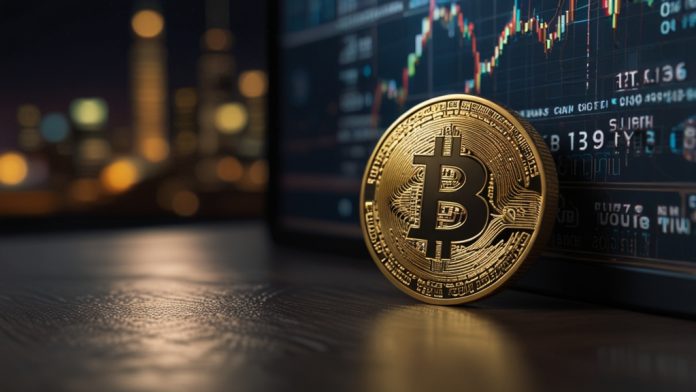What if your crypto wallet could beat the U.S. government at its own game? That’s the question on the minds of yield-hungry investors as USDC staking continues to challenge traditional financial instruments like Treasury bonds and savings accounts. With stablecoin yields often hovering between 4% and 8%, and the U.S. 10-year Treasury currently offering just above 4.5%, it’s worth asking: Can USDC staking rewards actually outpace the Fed-backed, risk-free rates?
Understanding the Players: USDC vs. Treasuries
USDC (USD Coin) is a USD-backed stablecoin designed to maintain a 1:1 peg with the U.S. dollar. It’s fully reserved, with funds held in cash and short-term Treasuries, and regularly audited to ensure transparency. When users stake USDC—typically by lending it through DeFi protocols or centralized exchanges—they earn rewards, expressed as annual percentage yield (APY).
Treasury yields, particularly from 10-year notes, are considered risk-free benchmarks. They represent the return on lending money to the U.S. government and are backed by its full faith and credit. Investors often use them as a measuring stick for other income-generating opportunities.
The Yield Showdown: Comparing the Numbers
As of Q2 2025, the U.S. 10-year Treasury sits around 4.5% amid persistent inflation concerns and a tight labour market. The Federal Reserve’s commitment to maintaining elevated interest rates has pushed yields to decade-high levels.
Meanwhile, USDC staking rewards are averaging between 5% and 7%, depending on platform risk and lending demand. Platforms like Coinbase offer 4.0% APY for simply holding USDC, while DeFi protocols like Aave or Compound offer variable returns that can exceed 7% during periods of high borrowing activity.
At face value, USDC staking can deliver equal or superior yield to Treasuries. But unlike bonds, these rewards are not guaranteed—they fluctuate with market conditions and platform performance. So the higher yield often comes at the cost of higher risk.
What Drives USDC Yields?
USDC staking yields are determined by supply and demand dynamics:
- Borrower Demand: When traders or institutions borrow USDC to leverage crypto positions, they pay interest. That interest funds the staking rewards.
- Platform Fees & Token Incentives: Some platforms subsidize rewards using governance tokens or fee revenue, especially during periods of aggressive growth.
- Reserve Interest: Platforms holding USDC (like Coinbase) earn interest on underlying reserves invested in T-bills, and pass some of that yield to users.
Yields can spike during bull markets but dip in periods of low demand. Unlike Treasuries, there’s no maturity date or locked-in return.
Risk vs. Reward: The Key Differences
USDC staking is not risk-free. Here’s how it stacks up:
| Factor | USDC Staking | U.S. Treasuries |
| Return Potential | 4% – 8% APY (variable) | ~4.5% APY (fixed) |
| Risk Level | Moderate (platform, smart contract) | Very Low (sovereign guarantee) |
| Liquidity | High (instant, in most cases) | Moderate (before maturity) |
| Inflation Impact | Neutral/Variable | Can be negative (fixed yield) |
| Accessibility | Global, 24/7, low barriers | Restricted by region/brokerage |
While Treasury bonds are virtually risk-free, they come with limited upside. USDC staking offers greater return potential, especially in bull markets, but includes risks like smart contract bugs, custodial failures, and regulatory intervention.
The Regulatory Cloud
One wildcard in the competition is regulation. U.S. authorities are increasingly scrutinizing stablecoin yield products. The SEC has argued that some crypto yield offerings could be classified as securities. This legal grey area could affect the availability or structure of USDC staking programs in the near future.
Still, well-regulated platforms like Coinbase have found ways to offer rewards while maintaining compliance. Others are shifting to non-custodial, decentralized models to avoid regulatory overreach.
Inflation, Rate Cycles, and Real Returns
With inflation remaining above target in 2025, even “high” yields from Treasuries can produce negative real returns. A 4.5% yield in a 5% inflation environment erodes purchasing power.
In contrast, USDC staking yields, while more volatile, have kept pace or even outstripped inflation during periods of high demand. This makes staking a compelling option for those seeking to preserve and grow value in real terms.
So, Can USDC Staking Outpace Treasuries?
The answer? Yes—but only with the right risk tolerance. In a high-rate environment, USDC staking can beat Treasury yields, particularly when:
- Borrower demand is strong.
- Platforms are transparent and secure.
- Inflation is eating into fixed-income returns.
However, investors must weigh these rewards against the absence of government guarantees and the volatility of crypto platforms. For those comfortable with digital assets and savvy about platform risks, USDC staking represents a viable alternative yield strategy in today’s environment.
Final Thoughts
Treasury bonds remain the gold standard of conservative investing. But in a yield-starved, inflation-heavy world, USDC staking offers a modern alternative: high liquidity, competitive returns, and the convenience of the crypto ecosystem.
For investors looking to optimize yield without excessive volatility, staking stablecoins like USDC may offer the best of both worlds—a digital safe haven with real earning power.



 Bitcoin
Bitcoin  Ethereum
Ethereum  Tether
Tether  XRP
XRP  USDC
USDC  TRON
TRON  Lido Staked Ether
Lido Staked Ether  Cardano
Cardano  Avalanche
Avalanche  Toncoin
Toncoin  Wrapped SOL
Wrapped SOL